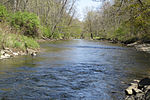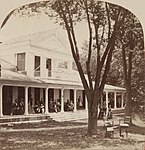Saratoga Springs Air Force Station
1952 establishments in New York (state)1977 disestablishments in New York (state)Aerospace Defense Command military installationsGeographic coordinate listsInstallations of the United States Air Force in New York (state) ... and 4 more
Lists of coordinatesMilitary installations closed in 1977Military installations established in 1952Radar stations of the United States Air Force
Saratoga Springs (Also known as Schuylerville) Air Force Station (ADC ID: P-50, NORAD ID: Z-50) is a closed United States Air Force General Surveillance Radar station. It is located 7.2 miles (11.6 km) southeast of Saratoga Springs, New York. It was closed by the Air Force in 1977.
Excerpt from the Wikipedia article Saratoga Springs Air Force Station (License: CC BY-SA 3.0, Authors).Saratoga Springs Air Force Station
Radar Road,
Geographical coordinates (GPS) Address External links Nearby Places Show on map
Geographical coordinates (GPS)
| Latitude | Longitude |
|---|---|
| N 43.011388888889 ° | E -73.6825 ° |
Address
Saratoga Springs Air Force Station
Radar Road
12170
New York, United States
Open on Google Maps







